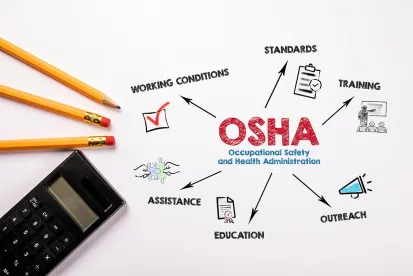Biden Releases American Families Plan. This week, the White House released an outline of its American Families Plan, which is being touted as the second phase of the administration’s infrastructure proposal (dubbed the “American Jobs Plan”). The American Families Plan would invest $1.8 trillion in education (including training for teachers), federal nutrition programs, childcare, and extending tax credits. Like the infrastructure proposal, the American Families Plan is not a bill (yet), but will rather serve as a first step in what is sure to be a lengthy legislative process. Here are some of its highlights:
-
Education. The administration proposes allotting $309 billion to fund free universal pre-school for three and four year olds, and two years of free community college.
-
Paid Family Leave. The proposal calls for “a national comprehensive paid family and medical leave program.” There are scant details regarding scope of coverage and who is eligible. The proposal is similarly silent with regard to funding of the program but implies that it will be taxpayer- (as opposed to employer- or employee-) funded. The White House’s Fact Sheet states: “We estimate this program will cost $225 billion over a decade.”
-
Paid Sick Leave. The proposal potentially includes the Healthy Families Act, which would require employers with 15 or more employees to allow employees to accrue up to 7 days of paid sick leave per year.
-
Unemployment Insurance. The outline states that the president “wants to work with Congress to automatically adjust the length and amount of UI benefits unemployed workers receive depending on economic conditions.”
-
Child Care. Families’ child care costs would be capped under the proposal. Additionally, the proposal states that, “[a]ll employees in participating pre-K programs and Head Start will earn at least $15 per hour.”
The American Families Plan proposes paying for itself through $1.5 trillion in tax hikes, expanded financial reporting, and increased Internal Revenue Service (IRS) enforcement (which will “focus on large corporations, businesses, and estates, and higher-income individuals”). At this early stage, it is hard to predict what strategy Democrats will use to advance the American Families Plan and where the proposal might end up. However, as the Buzz has discussed, it appears that Democrats have been given authority to use the budgetary reconciliation process at least twice more this calendar year, and they likely did not seek that determination just for the fun of it.
White House Establishes Task Force to Encourage Union Organizing. On April 26, 2021, President Biden issued an executive order titled “Executive Order on Worker Organizing and Empowerment” establishing “within the Executive Office of the President the Force on Worker Organizing and Empowerment.” Vice President Harris will chair the task force, Secretary of Labor Walsh will serve as vice chair, and the remaining members will consist of additional cabinet secretaries and other political appointees. The task force is instructed to recommend “statutory, regulatory, or other changes that may be necessary to make policies, practices, and programs more effective means of supporting worker organizing and collective bargaining.” The executive order instructs the task force to focus on four major areas: promoting “worker power in areas of the country with hostile labor laws, … marginalized workers (including women and persons of color) and hard-to-organize industries, and … changing industries.” Additionally, though not specifically identified in the executive order, President Biden’s campaign website promised that such a group would “consider whether there are very specific areas where the federal government could waive preemption of the National Labor Relations Act to allow cities and states to pursue innovative ways to increase union organizing and collective bargaining” and to “further explore the expansion of sectoral bargaining, where all competitors in an industry are engaged in collective bargaining with a single or multiple unions.”
ETA of ETS? Very Soon. This week the Occupational Safety and Health Administration (OSHA) sent its long-anticipated COVID-19 Emergency Temporary Standard (ETS) to the Office of Information and Regulatory Affairs (OIRA). At this stage in the process, the text of the regulation is not publicly available. Of course, this means that there is much speculation about its contents. For example, the chief of California’s Division of Occupational Safety and Health (better known as Cal/OSHA), Doug Parker, was on President Biden’s labor transition team and has been nominated to run OSHA. Does this mean that the ETS will use California’s standard as a model? There is further speculation that OSHA may apply multiple standards to different industries. Regardless, the Buzz expects a quick turnaround and approval by OIRA.
EO Increases Minimum Wage on Federal Contractors. Several weeks ago, the Buzz discussed President Biden’s instructions to his administration “to start the work that would allow him to issue an Executive Order within the first 100 days that requires federal contractors to pay a $15 minimum wage and provide emergency paid leave to workers.” Well, right at the 100 day deadline, on April 27, 2021, President Biden issued an executive order that will require federal contractors and subcontractors to pay $15.00 per hour to employees working on federal contracts. Leigh M. Nason and Evelyn A. Norton have the details.
Senate Hearing on DOL, NLRB Nominees. On April 29, 2021, the U.S. Senate Committee on Health, Education, Labor & Pensions (HELP) held confirmation hearings for Jennifer Abruzzo (nominated to be general counsel of the National Labor Relations Board) and Seema Nanda (nominated to be solicitor of labor). Republican senators asked both nominees about their positions on joint employment and raised questions about potential recusal and ethics issues concerning Abruzzo’s potential future participation in cases involving the Communication Workers of America, for which she served as special counsel. Committee Ranking Member Burr (R-NC) had some tough questions for Abruzzo about her role on the Biden transition team and potential participation in the decision to fire Peter Robb. Senate Democrats have the numbers, so there is a good chance that Abruzzo will get confirmed. But the hearing was further evidence that the termination of former general counsel Peter Robb and subsequent appointment of Abruzzo will be an on-going point of political contention.
EEOC Update. It was a busy week for the U.S. Equal Employment Opportunity Commission (EEOC), to wit:
-
The EEO-1 reporting portal opened on April 26, 2021. Covered employers will have until July 19, 2021, to file their EEO-1 reports. As we’ve noted before, the required filing consists only of EEO-1 Component 1, which does not include employee wage and hours worked data. James A. Patton, Jr. and Kiosha H. Dickey have the details.
-
Related to EEO-1 reports, the EEOC has returned to a practice of sharing EEO reports with state fair employment practices agencies.
-
On April 28, 2021, the Commission held a hearing entitled, “Workplace Civil Rights Implications of the COVID-19 Pandemic.” Twelve witnesses testified about the pandemic’s outsized impact on women (including farmworkers), individuals with disabilities, Asian Americans, Native Americans, older workers, and employers. The hearing is expected to lay the groundwork for forthcoming EEOC guidance relating to vaccines, and whether employers can lawfully offer their employees incentives to get vaccinated.
Meet the New Boss, Same as the Old Boss. It was reported this week that President Biden may tap Brandeis University professor David Weil to run the U.S. Department of Labor’s Wage and Hour Division. Weil served in the same position for much of President Obama’s second term and is known for his theory of the “fissured workplace.” During his time as administrator, Weil also issued sweeping “administrator’s interpretations” that expanded joint-employer liability and limited the test for independent contractor status.
The Sport of Kings (and Presidents). May 1, 2021, will mark the 147th running of the Kentucky Derby, and the Run for the Roses has a strong connection to Washington, D.C., politics. Over the years, nine U.S. presidents have attended the Derby, but only Richard Nixon attended the Derby while president. All other presidential attendees—Harry Truman, Lyndon Johnson, Gerald Ford, Ronald Reagan, George H. W. Bush, Bill Clinton, George W. Bush, and Donald Trump—have witnessed the “most exciting two minutes in sports” either before or after their time in the Oval Office. The Kentucky Derby of 1969 was an especially well-attended occasion, as Nixon (president of the United States), Reagan (then-governor of California) and Gerald Ford (then-House minority leader from Michigan) were all present at Churchill Downs. Of all the presidential pony fans through the years, Ford was the most frequent spectator at the Derby, having attended the race 13 times.




 />i
/>i

